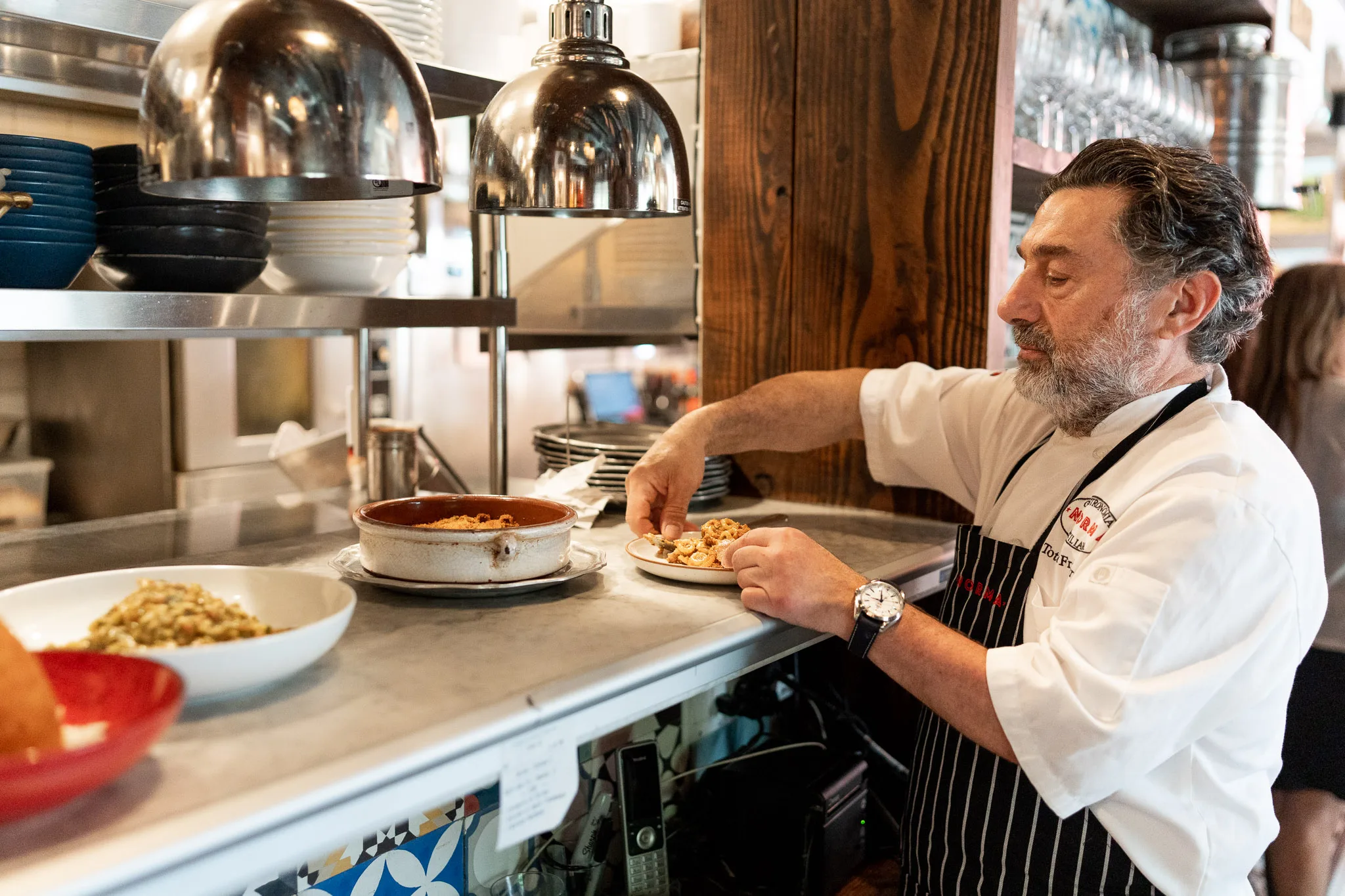Leverage brand partnerships to skyrocket your restaurant’s success

If you know me, you know I’m all about finding innovative ways to elevate our industry. Today, I want to talk about one of my favorite marketing strategies: leveraging strategic partnerships to boost your restaurant’s brand equity. This isn’t just theory—it’s a tried and tested strategy that has worked wonders for me and many others. Let’s dive in.
Skip the article and turn takeaways into action by scheduling a call with our team.
Ego often gets in the way of common sense. In an effort to keep our brand front and center in the minds of our community, we forget that co-branding and strategic partnerships can go a long way to boosting the status of our restaurant. My restaurant consisted of about 2 dozen brands–the brands that I believed were best in the industry. My vendors were my marketing tools and I spent as much time talking about them as I did talking about the restaurant itself.
Understanding brand equity transfer
First things first, what is brand equity? It’s the value your brand brings to your product or service beyond its functional benefits. When you partner with a brand that has strong equity, their positive attributes can rub off on you, enhancing your reputation and appeal. This is brand equity transfer, and it’s a game-changer.
Examples from my restaurant
Hedley & Bennett aprons: We wore these aprons because they scream quality and dedication. Aligning with a brand that tirelessly supports our industry mirrored our own commitment to excellence.
Mountain Valley water: Being a southern brand, selling local water instead of something imported underscored our authenticity and connection to regional roots.
Local farms and craft spirits: By promoting local farms and craft spirit companies, we highlighted our dedication to sustainability and community support, which in turn boosted our brand’s perceived value.
Local breweries: Serving local beers brought their fans into our fold, showing that we truly supported our community. Their brand equity became ours, and it was a win-win.
Local charities: Donating a percentage of our earnings to local charities built goodwill and a positive brand image. It showed our customers that we were committed to making a difference.
Best practices for strategic partnerships
Identify complementary brands
Find brands that align with your values, mission, and target audience. A partnership should feel natural and enhance your brand image, not overshadow it.
Build mutually beneficial relationships
A partnership should be a two-way street. Ensure both parties gain value, whether it’s through increased exposure, shared resources, or enhanced reputations.
Promote each other actively
Use every platform available—social media, in-restaurant promotions, joint events—to shout out your partnership. The more visible it is, the more effective the brand equity transfer.
Maintain consistent messaging
Ensure your marketing messages are aligned. Consistency helps reinforce the association between your brands in the minds of consumers.
Evaluate and adapt
Regularly assess your partnerships. Collect feedback, track performance metrics, and be ready to make adjustments to maximize the benefits.
Step-by-step process to scaling brand equity
Step 1: Assess your brand
Understand your current brand equity, strengths, and weaknesses. This will help you identify the type of partners that can enhance your brand.
Step 2: Research potential partners
Look for brands with strong equity and complementary values. Evaluate their market presence, customer base, and reputation.
Step 3: Initiate contact
Reach out with a clear proposal. Highlight mutual benefits and outline potential collaboration ideas.
Step 4: Formalize the partnership
Create a formal agreement detailing each party’s responsibilities, expectations, and goals. Include metrics for evaluating success.
Step 5: Launch joint marketing efforts
Coordinate marketing campaigns to highlight the partnership. Use both brands’ marketing channels to maximize reach.
Step 6: Engage customers
Create engaging customer experiences that emphasize the partnership. Think special events, co-branded products, and exclusive offers.
Step 7: Monitor and adjust
Continuously monitor performance. Gather feedback, analyze data, and make necessary adjustments to improve the partnership.
Examples of successful partnerships
Starbucks and Spotify
Starbucks teamed up with Spotify to offer curated playlists in their stores. This partnership not only enhanced the in-store experience but also bolstered Starbucks’ brand equity by associating it with a culturally relevant brand.
Sweetgreen and Local Farms
Sweetgreen partners with local farms to source ingredients, promoting these partnerships to underscore their commitment to fresh, local produce. This has greatly enhanced their brand image among health-conscious consumers.
McDonald’s and Coca-Cola
McDonald’s long-standing partnership with Coca-Cola is a prime example. Both brands benefit from their association, reinforcing each other’s image and reach.
Putting it all together
Strategic partnerships are a powerful tool for increasing brand awareness and improving brand equity. By carefully selecting complementary brands, building mutually beneficial relationships, and actively promoting these partnerships, you can significantly enhance your brand’s value and appeal.
This isn’t just about attracting more customers—it’s about building a stronger, more resilient brand that truly resonates with your community. Let’s work smarter, not harder, and transform our industry together.
Click below to download our Strategic Partnership Checklist, providing you with a breakdown on how to implement these strategies.
Want a simple way to level up your restaurant operations? Yelp Guest Manager is a software solution that allows customers to check themselves in, handles waitlists and reservations, and much more.
Restaurants that use Guest Manager paired with Yelp Ads experience 87% more traffic on their Yelp business page. Get a demo today!
Fill out the form to get the Strategic Partnership Checklist
"*" indicates required fields